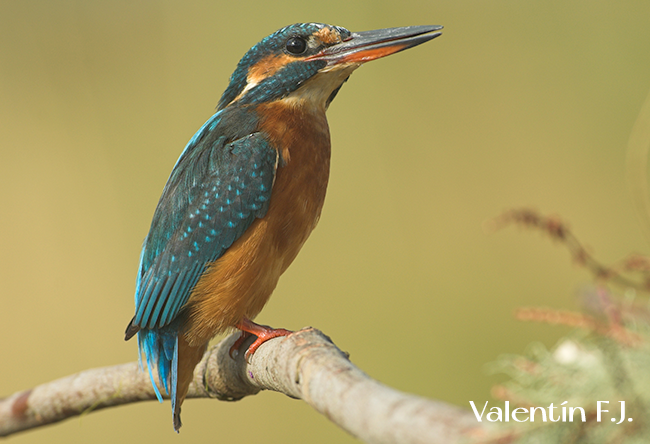Order: Coraciformes.
Family: Alcedinidae.
The Kingfisher cannot be confused with any other species in the Iberian Peninsula.
Male adults have the lower mandible of the beak colored black. In some individuals, a slight orange spot may appear at the base. On the other hand, the female adult has an orange spot that covers up to two thirds of the lower mandible of the beak, with the tip dark brown or black.
Care must be taken with juvenile specimens as they have the entire beak black like adult males, and it is not possible to sex them by this character.
It is possible to recognize 3 different ages:
Juvenile specimen: have orange chest feathers with a brown or greenish edge that forms a dark band. A very distinctive characteristic is the color of the legs, which are very dark in the case of juveniles. Finally, the flight feathers are of new generation.
1st/2nd year specimen: they look similar to the adult, but with the flight feathers slightly worn at the end of summer and really worn before the spring months. Some individuals show molt limits in the rectrices.
Adult specimen: they show a uniform orange-colored chest. From spring to autumn months, adults show intense orange-colored legs. Some individuals have been able to stop the molting process, showing new and worn primaries and secondaries. If the molt has been completed, they show very new flight feathers in the fall and slightly worn in the spring. The rectrices are all of the same generation.
Common Kingfishers perform a complete postnuptial molt that usually ends in November. This molt can leave some flight feathers unchanged. However, the postjuvenile molt is partial. This molt includes the body feathers, and in some individuals it may extend to part or all of the rectrices. This molt usually ends in October, but some specimens that were born in later months may maintain this process until December.
Primaries: 10 per wing.
Secundaries: 12-17 per wing.
Rectrices: 12.


